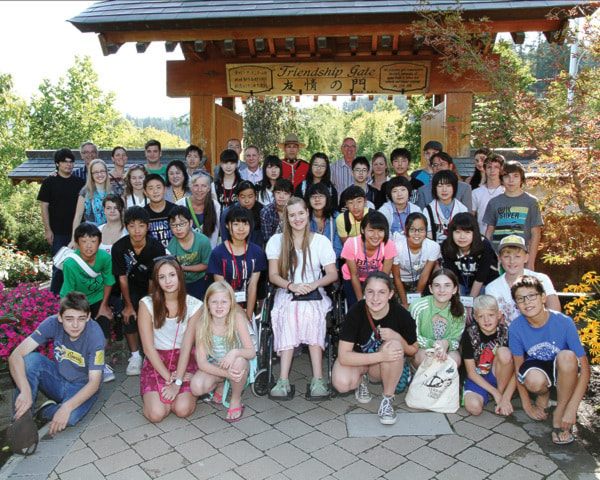It’s a relationship that has now encompassed a generation.
This year the twinning between Salmon Arm and Inashiki, Japan marks 25 years, with a contingent from Japan visiting the city last week as part of the long-running exchange program.
The relationship began in 1989 through the efforts of Chris Filiatrault, who is fluent in Japanese and has a Japanese wife and three children.
“I wanted to foster relations between our two countries. That might sound like a lofty goal, but it was something I believe in,” says Filiatrault. “Now more than 1,000 people have gone back and forth between our two communities.”
When the exchange began, it was with a place known as Azuma Mura – mura means village in Japanese. Over time, the area grew and was re-named Azuma Machi, which means town. Then later, an amalgamation created the city of Inashiki.
Like Salmon Arm, the area has its roots in agriculture. Its prime industry is rice growing.
The similar size and background of the two communities was part of what brought them together. Filiatrault flew to Japan in 1989 and met with then Mayor Naruke and a partnership was devised. A short time later, Salmon Arm Mayor Dick Smith also visited Japan and the official twinning agreement was signed. The partnership in Salmon Arm has been strongly supported by both the city and School District #83.
Now, the partnership has come full circle with one of the first Japanese high school students to visit Salmon Arm in the first exchange trip now sending her son to participate in the same cross-cultural experience.
“It’s very satisfying to see how the program has created these bonds,” says Filiatrault, who notes Inashiki also has a robust twinning committee designed to keep the exchange vibrant. “For some kids, it has been a life-changing experience to see a culture and a place they never knew existed. That’s what really keeps me going.”
A number of students from here have gone on to make their own trips to Japan and have kept in touch with their host families. Others have even moved to Japan to teach English.
The program has been given a significant boost by the creation of the Japanese language program at Salmon Arm Secondary.
While Japanese students learn English in school beginning in Grade 6, there was no counterpart in Salmon Arm until then-superintendent Doug Pearson and teacher Pam Chudiak brought the elective to the school.
“It was a huge boost to support the twinning program,” Filiatrault says, noting the Salmon Arm students are anxious to use their language skills when they make their trip to Japan.
The most visible symbol of the enduring relationship is the Friendship Gate in McGuire Lake Park, which was built in 1998 to commemorate the relationship. Filiatrault says this is one of the most special legacies of the twinning.
This year’s trip hosted a young student whose grandfather was one of the carpenters from Inashiki who came over to construct the gate.
In Inashiki, Salmon Arm contributed a log Friendship House, which is an open picnic structure adorned with First Nations art and is located beside a community centre.
Filiatrault says another memorable moment with the twinning came with the Salmon Arm response to the Fukushima disaster in Japan. People in Inashiki were affected and students rallied to raise $3,000 to contribute to the relief efforts.
Filiatrault says it was a very difficult time in Japan and the contribution was recognized in the Japanese city.
“It meant a lot to them that it was heartfelt and that we were thinking of them.”
While, due to economic circumstance, the exchange trips have been scaled back from every year to every other year, Filiatrault is confident the relationship will continue to flourish into the future. Another idea is to expand the relationship by creating some economic opportunities between the two areas. This year, Inashiki has sent an economic development delegate to meet with Salmon Arm officials.
Filiatrault says the exchange really helps to create friendships and goodwill.
He says the Japanese are always in awe of the space and scenery of Canada, not to mention the food portion sizes. And they love experiencing things like riding horses, water-skiing and mountain climbing. Then the Canadian participants get a taste of the extreme hospitality of the Japanese, as well as the ancient temples and respectful culture.
“I always call the last day the River of Tears. There’s always crying as the bus leaves and we have to pull the kids away from their host families,” Filiatrault says.
“You see the bond that develops in seven days. It’s a very special thing.”
